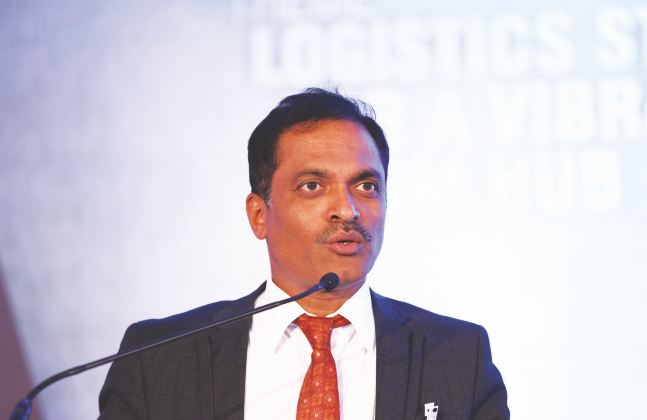[vc_row][vc_column][vc_column_text]
Logistics has become a focal point for many solar energy enterprises that are looking for cost savings, greater efficiencies and new markets. Vinay Shetty, MD, Canadian Solar India outlines how logistics infrastructure can be strengthened to meet the needs of the industry.
Q How would you assess the logistics preparedness of our ports and freight forwarders in India?
I would categorise handling of solar panels in two locations – at the port and at the site. At both places we would like to reduce multiple handling. At the ports, containers with solar modules can be RFID tagged and kept for clearance at a designated location to avoid multiple handling. An exclusive warehousing space for de-stuffing can minimise cracking of panels.
At the site, the presence of adequate equipment is the biggest drawback. Even the biggest ICDs in India do not have sufficient equipment. While handlers all over the world employ two people to carry the modules with equipment, in India one person carries it from the truck to the installation point bearing it on his head. As a result, the glass casing over the module is susceptible to developing cracks. Usage of forklifts at the site can prevent such mishaps.
Q Why solar panel importers prefer moving cargo by road over rail?
Using rail transport is tedious and stressful. The route and schedule are always uncertain and the shipper is never sure of when his cargo will be aboard once it arrives in to the port. From 8 hours to 3 days it could be any time within a week. This makes planning difficult for us and we lose out on production time. We have equal complaints on road transport as well. But typically, most solar projects are in remote areas, we have no choice but to use road transport. The roads to the project site aren’t laid well. We have our set of woes with the truckers too who abandon cargo at the site once they offload it. On an average, it takes us 28 days to receive cargo at site for installation from the time of arrival at the port.
Q The Customs are thinking of a re-classification too.
Yes, the Customs has classified solar panels as a DC Generator which attracts additional duty of 7.5 per cent. For the last 40 years, they were classified as modules but now they have decided to re-classify this because they believe modules can generate power, the truth being that modules need an inverter or a charge controller to generate electricity. This duty on 8-9GW on modules is a huge sum for anyone to bear.
Q What best practices can we adopt from ports overseas where panels are frequently handled?
Rotterdam, I’m given to believe, has some of the best facilities for handling such equipment. They’re not just efficient but are transparent too. In much of Europe too, when a shipment lands, you can affix a cost to every step of the logistics process. In India, you can’t affix a cost to any process because there is no standard operating procedure. Each time the importer is presented with a different costing module to the same destination. For instance, a different destination charge is levied by different shipping lines when the route and the origin and final destination are same. Clearance charges for the same quantum of shipment vary each time making it cost ineffective for the shipper.
Q India is set to be the third largest PV market. What is the estimate of containers doing the rounds?
Let’s do a simple math. Given that solar panels are huge, we usually use 40 footers. A Gigawatt of power roughly means 10,000 teu. With India’s estimates of solar power production scaling limits every year, I see tremendous requirement for not just containers, but a uniform handling policy across ports and rail-road transport.
[/vc_column_text][/vc_column][/vc_row]






